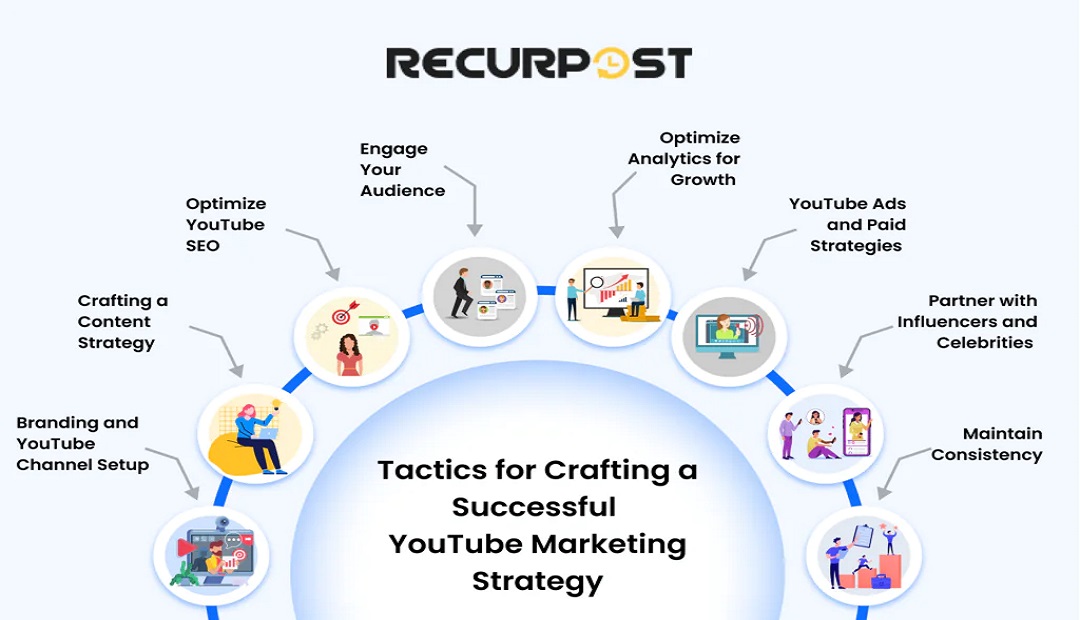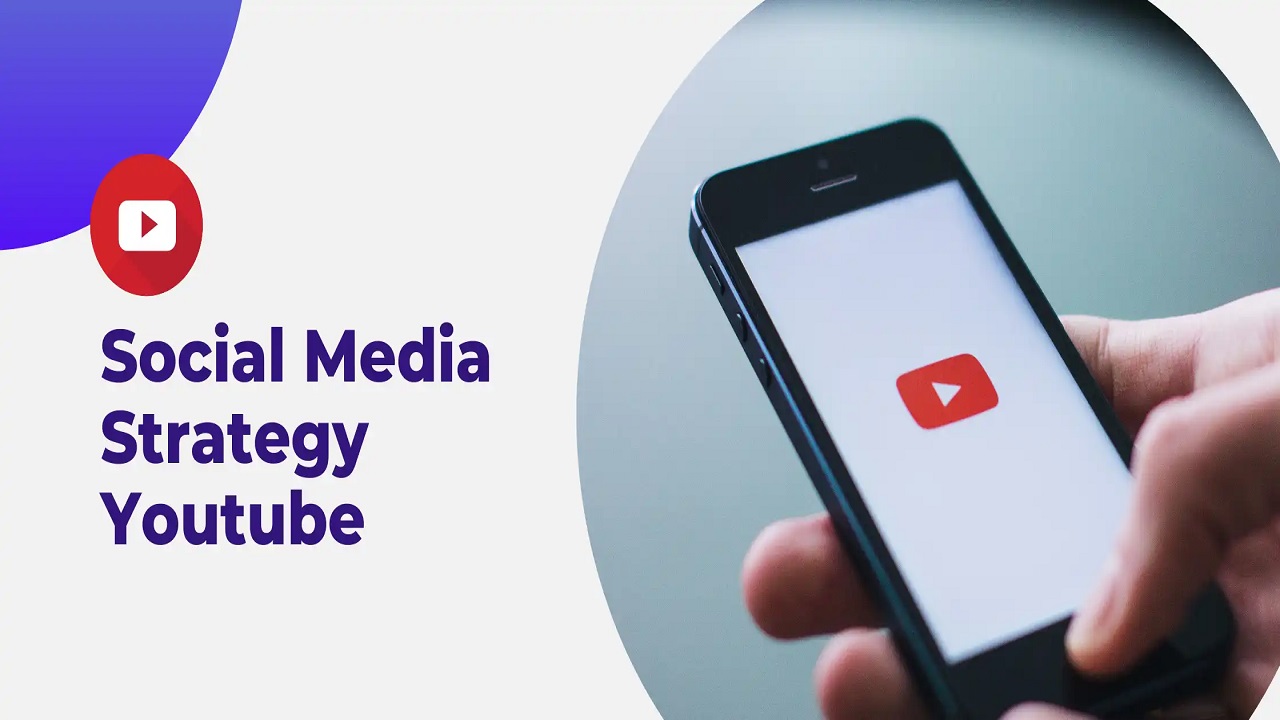Social Media Strategy: Creating YouTube videos without a strategy is like sailing a ship with no compass — you might move, but you won’t get anywhere meaningful. If you’re serious about growing your YouTube presence, it’s time to stop guessing and start planning. A solid social media strategy for YouTube not only boosts your visibility but also builds a loyal audience.
Why YouTube Needs a Strategy
With over 2 billion logged-in monthly users, YouTube is a massive ocean of content. If you want your videos to stand out, a random upload schedule and “hope-for-the-best” mindset won’t cut it. You need a roadmap — and that’s where strategy steps in.
The Power of Social Media in Amplifying Reach
Social platforms are the secret sauce. By sharing your YouTube content across other channels like Instagram, Twitter, and Facebook, you’re creating multiple touchpoints for people to discover your videos. It’s like casting a wider net in the ocean.
Step 1 – Define Your YouTube Goals
Align Goals with Business Objectives
First things first: what do you want out of your YouTube channel? Is it more brand awareness? Lead generation? Sales? Make sure your YouTube goals align with your bigger business vision.
Setting SMART Goals for YouTube
Be specific. “Grow my channel” is vague. “Get 1,000 subscribers in 3 months by posting weekly tutorials” is SMART — Specific, Measurable, Achievable, Relevant, and Time-bound.
Step 2 – Understand Your Target Audience
Identifying Viewer Demographics
Who’s watching your content — and who should be? Use YouTube Analytics to dig into viewer age, location, gender, and watch behavior. These insights will shape your content.
Creating Viewer Personas: Social Media Strategy
Think of your ideal viewer like a character in a movie. What do they like? What problems do they face? Create personas to guide your tone, topics, and style.
Step 3 – Analyze Your Competition
What Are Your Competitors Doing Right?
Spying (the legal kind) on competitors is not cheating — it’s smart. Look at their top videos, upload frequency, and engagement levels. Learn what works.
How to Stand Out from the Crowd
Imitation may be flattering, but originality wins. Find content gaps they’ve missed or offer a unique angle. Maybe it’s humor, maybe it’s depth — just make it yours.
Step 4 – Develop Your Content Strategy
Picking the Right Content Format
Will you do tutorials, vlogs, reviews, or reaction videos? Align your format with your audience’s preferences and your strengths. Don’t do talking-head videos if you’re camera-shy — try animation or voiceovers instead.
Creating a Consistent Content Calendar
Inconsistency kills momentum. A weekly upload schedule beats random bursts of content. Use tools like Trello, Notion, or Google Calendar to plan and stick to it.
Step 5 – Optimize Your YouTube Channel
Branding Your Channel
Your banner, logo, and video thumbnails should scream “You!” at a glance. Stick to consistent colors, fonts, and messaging. It’s like dressing your content in a recognizable outfit.
SEO Optimization for Titles, Tags, and Descriptions
Keywords matter. Use tools like TubeBuddy or VidIQ to find what your audience is searching for. Add those keywords naturally in your video titles, tags, and descriptions to increase discoverability.
Step 6 – Promote Your Content on Other Social Platforms
Leveraging Instagram, Facebook, and Twitter
Don’t wait for viewers to find your videos — go to where they hang out. Tease your content on Instagram Stories, tweet clips on Twitter, or post trailers on Facebook groups.
Collaborations and Influencer Marketing
Team up with fellow creators. Collabs bring your video in front of a new audience. Even micro-influencers can make a big impact if they’re in your niche.
Step 7 – Track, Measure, and Improve
Key Metrics to Monitor
Watch time, audience retention, click-through rate (CTR), and engagement (likes, comments, shares) tell you how well your content performs. Track these regularly.
Adjusting Strategy Based on Analytics
If a certain video flops, dig into why. Bad thumbnail? Boring intro? Use this data to pivot and improve. A good strategy isn’t static — it evolves.
Common Mistakes to Avoid: Social Media Strategy

Inconsistency
Uploading three times a week for a month and then disappearing for three months is a recipe for failure. Stay consistent or risk losing subscribers.
Ignoring the Community
YouTube is a two-way street. Reply to comments, ask viewers what they want to see next, and make them feel seen. Your audience isn’t just a number — it’s a community.
Conclusion: Social Media Strategy
There’s no magic bullet for YouTube success, but a well-mapped strategy is the next best thing. Follow these seven steps to build a channel that not only grows — but thrives. Remember, your content is the vehicle, but strategy is the fuel. Start planning, keep tweaking, and watch your channel take off.
FAQs
How long does it take to see results on YouTube?
It depends on your niche and effort, but typically, 3–6 months of consistent posting is where you start to see traction.
What tools can help manage a YouTube strategy?
TubeBuddy, VidIQ, Canva (for thumbnails), Notion (for planning), and Google Analytics are great places to start.
How often should I post videos?
At least once a week is ideal, but choose a frequency you can sustain long-term. Quality matters more than quantity.
Is YouTube still worth it in 2025?
Absolutely. With the rise of video consumption and YouTube Shorts, the platform continues to grow stronger.
What’s more important: quality or quantity?
Both matter, but quality wins long-term. If you can only post one great video a week, do that — and do it well.


